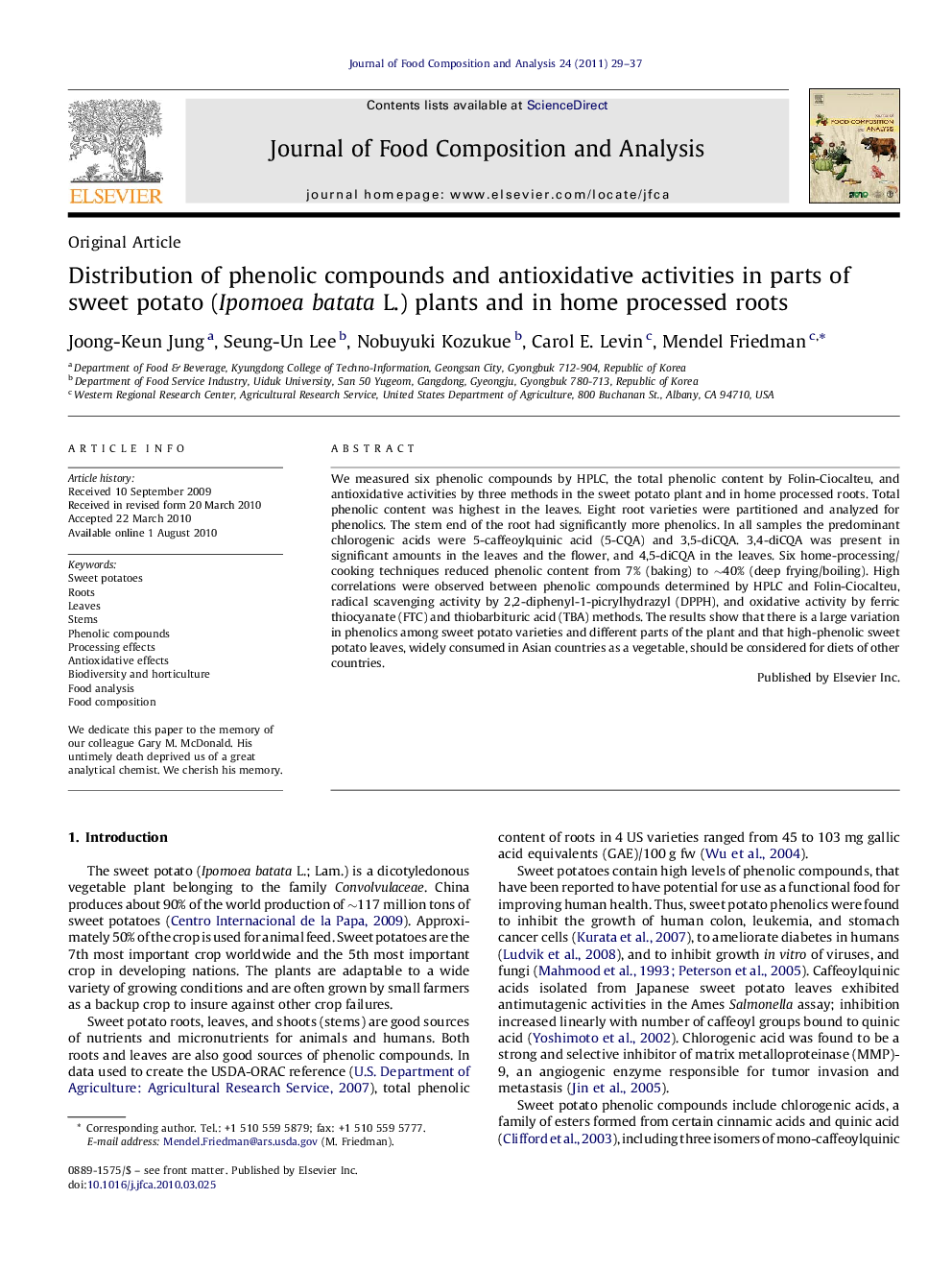| Article ID | Journal | Published Year | Pages | File Type |
|---|---|---|---|---|
| 1218898 | Journal of Food Composition and Analysis | 2011 | 9 Pages |
We measured six phenolic compounds by HPLC, the total phenolic content by Folin-Ciocalteu, and antioxidative activities by three methods in the sweet potato plant and in home processed roots. Total phenolic content was highest in the leaves. Eight root varieties were partitioned and analyzed for phenolics. The stem end of the root had significantly more phenolics. In all samples the predominant chlorogenic acids were 5-caffeoylquinic acid (5-CQA) and 3,5-diCQA. 3,4-diCQA was present in significant amounts in the leaves and the flower, and 4,5-diCQA in the leaves. Six home-processing/cooking techniques reduced phenolic content from 7% (baking) to ∼40% (deep frying/boiling). High correlations were observed between phenolic compounds determined by HPLC and Folin-Ciocalteu, radical scavenging activity by 2,2-diphenyl-1-picrylhydrazyl (DPPH), and oxidative activity by ferric thiocyanate (FTC) and thiobarbituric acid (TBA) methods. The results show that there is a large variation in phenolics among sweet potato varieties and different parts of the plant and that high-phenolic sweet potato leaves, widely consumed in Asian countries as a vegetable, should be considered for diets of other countries.
